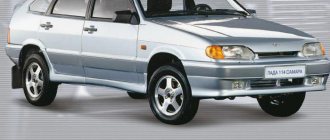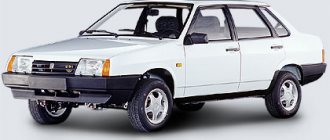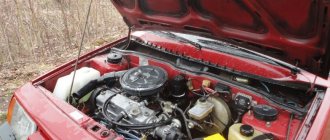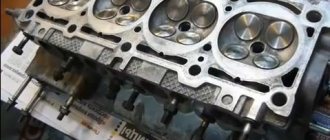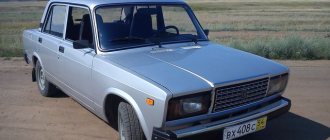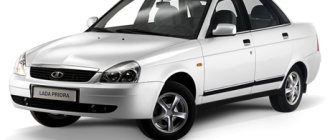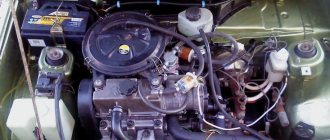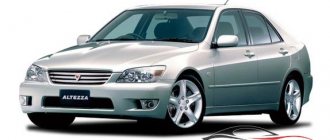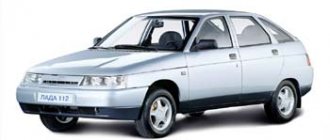One of the most famous developments of Soviet motor vehicles is the VAZ 2109 engine and its various modifications. Thus, the motor, which was developed back in 1982, serves faithfully to this day. This is one of the most common engines in the CIS.
It must be said that this is not considered one of the reliable units, but it is very repairable, which makes it quite popular among car enthusiasts.
Description and modifications
As such, a “nine” engine does not exist in nature. At least, the AvtoVAZ plant did not produce it. All 2109 models were equipped with a figure-eight power unit and its modifications. Of course, in many documents you can find the VAZ 2109 engine, but this is deception or ignorance.
But in the technical documentation of the manufacturer you cannot find information about the 2109 engine, since such an engine does not exist. Over the entire period of their production, all “nines” were equipped with engines with the following markings: VAZ-21081 (1.1 8V), VAZ-2108 (1.3 8V), VAZ-21083 (1.5 8V), VAZ- 2111-80 (1.5i 8V) and VAZ-11183-20 (1.6i 8V).
VAZ-2109
Small class passenger cars with front-wheel drive and a transverse engine.
Produced by the Volzhsky Automobile Plant since 1988. The body of the VAZ-2109 and VAZ-21093 is a monocoque, five-door, two-volume hatchback. The front seats have headrests and are adjustable in length and backrest angle. The rear seat can be folded down to increase luggage space. Cars can be equipped with an electrically heated rear window, wipers and washers for the rear window and headlights. Currently the model is called "Lada Samara"
Car modifications:
Engine.
Maud. VAZ-2108 (for the VAZ-2109 car), petrol, in-line, 4-cylinder, 76×71 mm, 1.3 l, compression ratio 9.9, operating order 1-3-4-2. power 47 kW (63.7 hp) at 5600 rpm, torque 94 N-m (9.6 kgf-m) at 3400 rpm. Carburetor 2108-11070-10-78. Air filter - with automatic thermostat and replaceable filter element. Engine cooling system - with an electric fan that automatically turns on and off,
Mod.VAZ-21083 (for VAZ-21093, -21099 cars and their modifications), petrol, in-line, 4-cylinder. 82x71 mm, 1.5 l, compression ratio 9.9, operating order 1-3-4-2. power 51.5 kW (70 hp) at 5600 rpm, torque 106.4 N-m (10.85 kgf-m) at 3400 rpm.
Transmission.
The clutch is single-plate, with a diaphragm spring. The clutch release drive is cable. Gearbox: 5-speed, with synchronizers in forward gears. Before. Numbers: I-3.636; II-1.96; III-1.357, IV-0.941, V-0.784. ZX-3.53. The main gear is cylindrical, helical, gear ratio is 3.94. Differential - conical, two-satellite. The front wheels are driven by shafts with constant velocity joints.
Wheels and tires.
The wheels are disc, rim 4 1/2J13 for tube tires and 4 1/2J-13H2 for tubeless tires. Fastening - with 4 bolts. Tires - tube or tubeless 165/70R13, 155/80R13 or 175/70R13. Air pressure in tires is 2.0 kgf/cm. sq. Number of wheels 4+1.
Suspension.
The front is independent, with shock-absorbing struts, coil springs, lower wishbones with braces and an anti-roll bar (MacPherson strut). The rear is on longitudinal interconnected arms, with coil springs and hydraulic shock absorbers.
Brakes.
Working brake system: front brakes - disc, rear - drum, with automatic clearance adjustment. The drive is hydraulic, two-circuit, diagonal, with a vacuum booster and a brake force regulator. The parking brake is on the brake mechanisms of the rear wheels, the drive is cable. The spare brake is one of the circuits of the service brake system.
Steering.
The steering mechanism is rack and pinion.
Electrical equipment.
Voltage 12 V, ac. battery 6ST-55A, generator 37.3701, voltage regulator 17.3702. starter 29.3708; the ignition system is contactless, with an ignition coil 27.3705, an electronic switch 3620.3734 and a distribution sensor 40-3706. Spark plugs FE65P (Yugoslavia) or A17-DV-10.
Filling volumes and recommended operating materials.
Fuel tank - 43 l. AI-93 gasoline; cooling system - 7.8 l antifreeze A-40;
engine lubrication system - 3.5 l, M-12G, at temperatures from plus 35 to minus 10 degrees C; M-6/10G, at temperatures from plus 20 to minus 25 degrees C; M-5/10, at temperatures from plus 30 to minus 30 degrees C;
gearbox housing (5-speed) - 3.3 l, M-8GI at temperatures from plus 45 to minus 400 °C; M-12G, at temperatures from plus 45 to minus 25 degrees C; M-6/10G, and M-5/10G, at temperatures from plus 45 to minus 40 degrees C;
Specifications
All engines that were installed on the VAZ 2109 were small in volume, but had sufficient power characteristics and dynamics. But things didn’t work out with the traction power. The engine power of the VAZ 2109 ranges from 54 to 81 horsepower. It is worth considering each engine option and its technical characteristics separately.
21081 (1.1 8V)
| Name | Index |
| Volume | 1.1 liter (1099 cc) |
| Number of cylinders | 4 |
| Number of valves | 8 |
| Fuel | Petrol |
| Injection system | Carburetor |
| Fuel consumption | 6,7 |
| Cylinder diameter | 76 |
| Cylinder operating order | 1-3-4-2 |
2108 (1.3 8V)
| Name | Index |
| Volume | 1.3 liters (1289 cc) |
| Number of cylinders | 4 |
| Number of valves | 8 |
| Fuel | Petrol |
| Injection system | Carburetor |
| Fuel consumption | 7.0 l |
| Cylinder diameter | 76 |
| Cylinder operating order | 1-3-4-2 |
21083 (1.5 8V)
| Name | Index |
| Volume | 1.5 liters (1499 cm3) |
| Number of cylinders | 4 |
| Number of valves | 8 |
| Fuel | Petrol |
| Injection system | Carburetor |
| Fuel consumption | 7.0 l |
| Cylinder diameter | 76 |
| Cylinder operating order | 1-3-4-2 |
2111-80 (1.5i 8V)
| Name | Index |
| Volume | 1.5 liters (1499 cm3) |
| Number of cylinders | 4 |
| Number of valves | 8 |
| Fuel | Petrol |
| Injection system | Injector |
| Fuel consumption | 7.5 l |
| Cylinder diameter | 82 |
| Cylinder operating order | 1-3-4-2 |
11183-20 (1.6i 8V)
| Name | Index |
| Volume | 1.6 liters (1596 cc) |
| Number of cylinders | 4 |
| Number of valves | 8 |
| Fuel | Petrol |
| Injection system | Injector |
| Fuel consumption | 9.5 l |
| Cylinder diameter | 82 |
| Cylinder operating order | 1-3-4-2 |
As you can see, the evolution of engines has come from the carburetor type to the injection type. Although with an increase in engine volume, fuel consumption also increased proportionally.
Another important fact remains the question: where is the engine number on old models of engines? As you know, the engine number was stamped on the cylinder block only from 1984 and on earlier versions that were exported. Therefore, you shouldn’t even look for this identifier on a 1983 power unit, since it simply doesn’t exist.
Salon
Especially for the new series of cars, the Volzhsky Automobile Plant abandoned the Zhigulevsky exterior, creating a completely new interior. The car is arranged so that the driver can easily and comfortably reach everything. The model has 3 types of panels: high, low and euro. In the luxury configuration, the car was equipped with electric windows. It is worth noting that the seats have now become more comfortable, which contributes to a more comfortable ride. The rear sofa is small, as it was intended for children, but in the dashing 90s, 2-3 large guys could fit there.
This is an ideal car for a novice driver and work. The car is characterized by high maintainability, inexpensive parts and wide scope for tuning the interior, engine, and appearance.
Repair and service
On average, repairs to internal combustion engines of VAZ 2109 modifications are done based on mileage. This figure is about 200,000 km. Engine overhauls are carried out similarly to any Zhiguli power unit. Since, compared to the Volgovsky engine, the Vazovsky is quite small, motorists often do the bulkhead in their garage with their own hands.
The 2109 engine is highly repairable, since the cast iron block is quite difficult to destroy, and the cost of the head is low, which allows you to repair the internal combustion engine cheaply and without much expense with your own hands. Another positive factor in the repair is that the power unit is simple in design and even inexperienced car enthusiasts are able to carry out minor repairs to the VAZ 2109 engine with their own hands.
The main problems that many people face include: changing the oil in the VAZ 2109 engine, replacing spark plugs and high-voltage wires, as well as overhauling and adjusting the carburetor. By the way, almost all engines were equipped with an excellent injection element, which everyone knows as “Solex”.
Another question that car enthusiasts often ask is how much oil should be poured into the engine? This indicator depends on the type of motor. For example, for a VAZ-21081 this will be one indicator, but for a VAZ −11183-20 it will be completely different. Therefore, if a motorist wants to know how much oil is in his power unit, he needs to look at the technical documentation.
Tuning
Tuning the VAZ 2109 engine is quite simple and without any particular difficulties. So, the first thing motorists do to their engine is change the ignition system. Of course, on older models there is a contact version installed, which has long been obsolete, and therefore contactless is installed.
At the same time, spark plugs and high-voltage wires are changed. Don't forget about the ignition coil either. All this will give improved fuel combustion in the cylinders only if everything is configured correctly.
Next comes boring and reassembly of the cylinder block. So, many car enthusiasts install a sports piston version, which provides a lightweight crankshaft, pistons and connecting rods. Then, the guide bushings and valves are changed. All these modifications will give an increase in power by about 25-30 horses.
The last stage is external tuning. This may include: installing a zero-resistance air filter, overhauling the carburetor, replacing water cooling pipes, installing an improved pump and generator.
Do not forget about such an important element as the starter, a range of varieties that can be found in tuning stores. It is also recommended to replace the radiator with a lighter one, that is, install an aluminum one. All this will give more opportunities for the engine, and accordingly for the motorist.
Malfunctions
- The engine does not start. There is no fuel supplied to the carburetor or not enough fuel is supplied. The following problems may be causing this problem:
| Causes | How to fix the problem |
| Foreign objects and debris got into the fuel line, which led to severe blockage. The fuel pump, carburetor filter, fuel line may be clogged. | Carry out a complete cleaning of the fuel supply systems to the engine. This can be done either with water pressure or with compressed air. |
| Failure of the pump supplying fuel to the engine. | Conduct a full diagnostics of the pump, identify the breakdown, and replace the faulty part with a working one. |
| Foreign objects or debris have entered the fuel filter. | Cleaning the filter yourself is quite difficult and time-consuming. It is much cheaper and faster to replace it with a new one. |
| Ignition problems. The engine starts poorly or does not start at all. | Conduct diagnostics of the ignition system, seek help from specialists. Partial or complete disassembly of the VAZ 2109 engine may help find the fault. |
- Problems and malfunctions during operation of the solenoid valve. This part is part of the carburetor and affects the ignition process, which is why its breakdown leads to the following troubles
| Causes | How to fix the problem |
| Broken or damaged wiring. This problem affects the operation of the valve control unit, which leads to faulty fuel supply and reduces the power of the VAZ 2109 engine. | Carry out a full check of each circuit, find the damaged wire, replace it with a intact one, and check the operation of the system. |
| The solenoid valve control unit does not work. | In this case, replacing or repairing it yourself is risky due to the complex structure of the device. It is advisable to entrust repairs to specialists. |
| During the initial operating cycle of the engine, the carburetor air damper does not operate, which should open at the first flashes in the engine cylinders. | The cause of this breakdown may be depressurization of the starting device in the carburetor. |
- Engine problems
| Causes | How to fix the problem |
| The idle speed of the engine is difficult to adjust and does not work properly. The engine is breathing. | In this case, you will need to carry out a complete setup and adjustment of the idle speed. Disassembling the VAZ 2109 engine also helps to identify the fault. |
| The system responsible for controlling the carburetor solenoid valve is faulty or partially broken. | Carry out a full check of each circuit, find the damaged wire, replace it with a intact one, and check the operation of the system. |
- Problems in the operation of the VAZ 2109 carburetor engine
| Causes | How to fix the problem |
| The carburetor does not work due to severe contamination of the channels or jet. | The mentioned parts of the carburetor are cleaned using compressed air. It is important to control the air supply to prevent damage. |
| Liquid has entered the carburetor or jet. | Also, use compressed air to clean carburetor systems from residual liquid. Check the fuel tank for sediment and drain if necessary. |
| The starting device does not work due to depressurization of the system. The trigger diaphragm is broken. This may reduce the productivity of the VAZ 2109 engine. | Check for damage to the diaphragm, replace if a malfunction is detected. |
| Problems with the ignition system. Complete or partial inoperability. | Carrying out diagnostics of the ignition system, replacing faulty parts with new ones. |
| Air entering the brake booster compartment. This usually happens due to a torn vacuum hose. Such a breakdown affects the performance of the econometer, ignition distributor and vacuum regulator-sensor. | Check the hose, find damage and repair it. You can also completely replace the hose. It is necessary to pay attention to the mounting clamps; if necessary, they should be tightened. |
| Damage to the gasket in the intake manifold connections. Such a breakdown leads to air leaks into the intake manifold. Affects the performance of the carburetor and engine of the VAZ 2109. | Check for damage to the intake pipe. Tighten all nuts. If this does not help, then most likely you will need to replace the gaskets with new ones. |
Conclusion
The VAZ 2109 engine, or rather its varieties that were installed on the car, became legends of the Soviet automobile industry. So, having a fairly small size, it was powerful, which gave it great popularity among motorists. Another positive factor was that repairing the VAZ 2109 engine is quite easy to do with your own hands, which allows any car enthusiast to reduce costs at a car service center.
With the popularization of tuning, most drivers who owned 2109 engines began to carry out modifications and, as practice shows, quite successfully.
